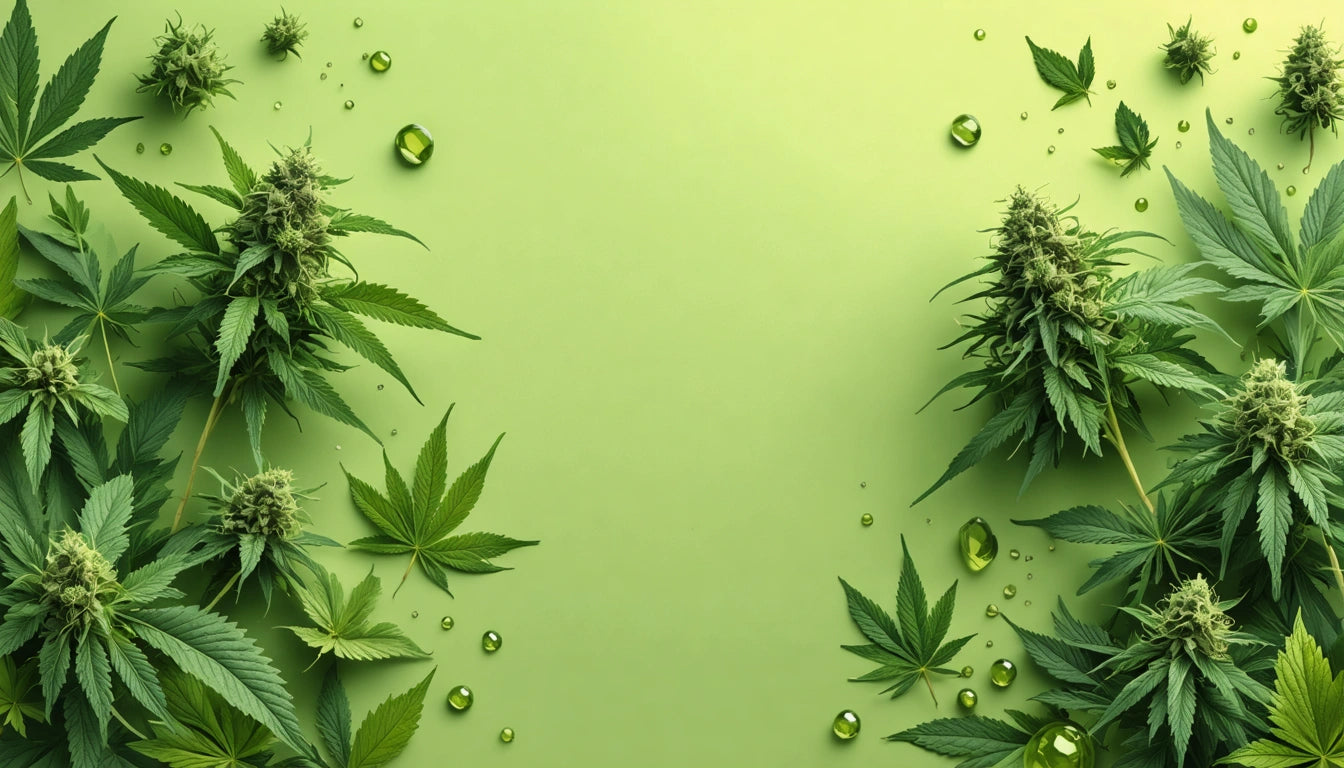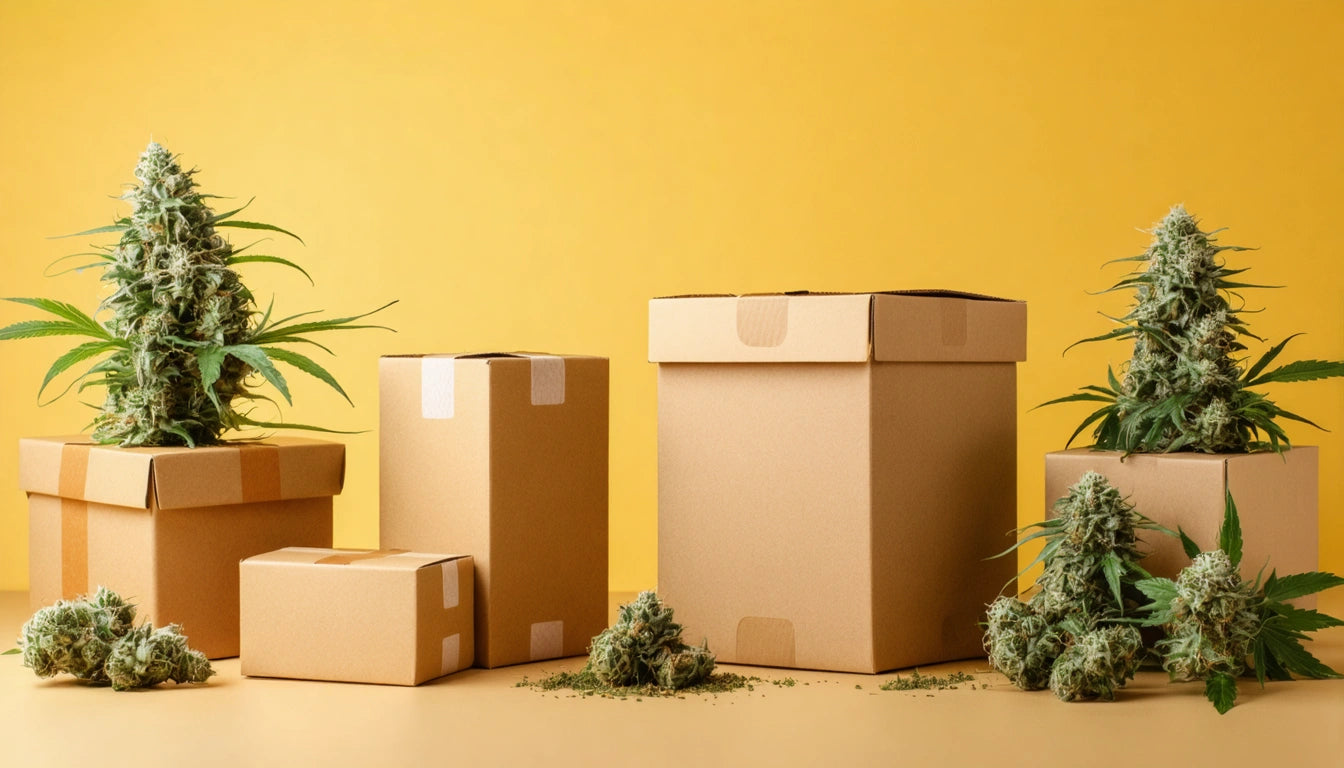Table of Contents
The debate between minimalist and maximalist approaches to cannabis packaging continues to evolve as brands seek the most effective way to connect with consumers and stand out on increasingly crowded dispensary shelves. Each aesthetic offers distinct advantages in different market segments, with performance metrics varying based on target demographics, product positioning, and retail environment.
Defining Minimalist & Maximalist Cannabis Packaging
Minimalist cannabis packaging embraces simplicity with clean lines, limited color palettes, and abundant white space. These designs typically feature refined typography, essential information only, and subtle branding elements. The approach communicates sophistication, purity, and premium positioning.
Maximalist packaging, by contrast, utilizes bold colors, intricate patterns, and multiple visual elements to create high-impact shelf presence. These designs often incorporate detailed illustrations, varied textures, and eye-catching embellishments that tell a more complex brand story through visual abundance.
Consumer Psychology Behind Packaging Preferences
Minimalist Appeal Factors
Research indicates that minimalist packaging often resonates with consumers seeking premium experiences and straightforward information. According to color psychology studies in cannabis packaging, the restrained use of color in minimalist designs can signal quality and reliability to consumers.
The clean aesthetic also aligns well with medical positioning, as explored in the comparison of medical versus recreational cannabis packaging design. For products targeting health-conscious consumers or medical patients, minimalism often performs better by communicating clinical efficacy and professionalism.
Maximalist Performance Drivers
Maximalist designs excel in creating memorable brand experiences and emotional connections. The approach performs particularly well with recreational consumers seeking discovery and experience. The visual complexity can effectively communicate strain characteristics and expected effects through rich visual storytelling.
Brands utilizing maximalist approaches often see stronger social media engagement, as detailed in an analysis of packaging impact on social media shareability. The visually striking nature of these designs makes them more likely to be photographed and shared by consumers.
Market Performance Data and Insights
Market research shows regional variations in packaging preference. West Coast markets have historically favored more experimental, maximalist approaches, while East Coast consumers often respond better to restrained designs. This geographic distinction is explored in depth in the analysis of regional design preferences across cannabis markets.
When implementing either approach, operational efficiency matters. Brands investing in automated filling and packaging equipment can maintain consistency across production runs, ensuring that the chosen aesthetic is executed with precision regardless of complexity.
Balancing Compliance with Design Philosophy
Both minimalist and maximalist approaches must navigate the complex regulatory landscape of cannabis packaging. Compliance requirements can sometimes limit creative expression, particularly for maximalist designs that utilize more visual real estate for non-regulatory elements.
The challenge of balancing compliance and creativity affects both approaches differently. Minimalist designs often have an advantage in clearly presenting required warning information without visual clutter, while maximalist designs must carefully integrate compliance elements without compromising their rich visual language.
Hybrid Approaches for Optimal Results
Many successful cannabis brands are adopting hybrid approaches that combine elements of both philosophies. These balanced designs might feature:
- Clean, structured layouts with selective maximalist elements
- Strategic use of white space around bold graphic focal points
- Consistent typography systems with variable color applications
- Simplified primary packaging with maximalist secondary packaging
- Core minimalist design with seasonal maximalist limited editions
This hybrid strategy allows brands to maintain recognition while adapting to different product lines or consumer segments. The approach is particularly effective for brands with diverse product offerings targeting multiple consumer types, as discussed in guidelines for using packaging design to differentiate product lines.
Implementing Your Packaging Strategy
When determining which approach will perform better for your brand, consider these key factors:
First, evaluate your brand positioning and values. Minimalist designs typically perform better for brands emphasizing purity, precision, and premium positioning. Maximalist designs often work better for brands built around creativity, exploration, and bold experiences.
Second, understand your target consumer's shopping behavior. Research shows that different demographics respond to visual complexity differently. Newer cannabis consumers often prefer clearer, more minimalist communication, while experienced users may appreciate the detailed storytelling of maximalist approaches.
Finally, consider your retail environment. Products in well-organized, premium dispensaries may benefit from minimalist distinction, while those in high-volume retailers might need maximalist approaches to capture attention in visually competitive spaces.
The most successful brands recognize that packaging design is not just about aesthetics but about creating functional systems that support the entire consumer journey from shelf to use. By thoughtfully implementing either minimalist, maximalist, or hybrid approaches based on strategic objectives rather than trends alone, cannabis brands can develop packaging that truly performs in today's complex marketplace.











Leave a comment
All comments are moderated before being published.
This site is protected by hCaptcha and the hCaptcha Privacy Policy and Terms of Service apply.